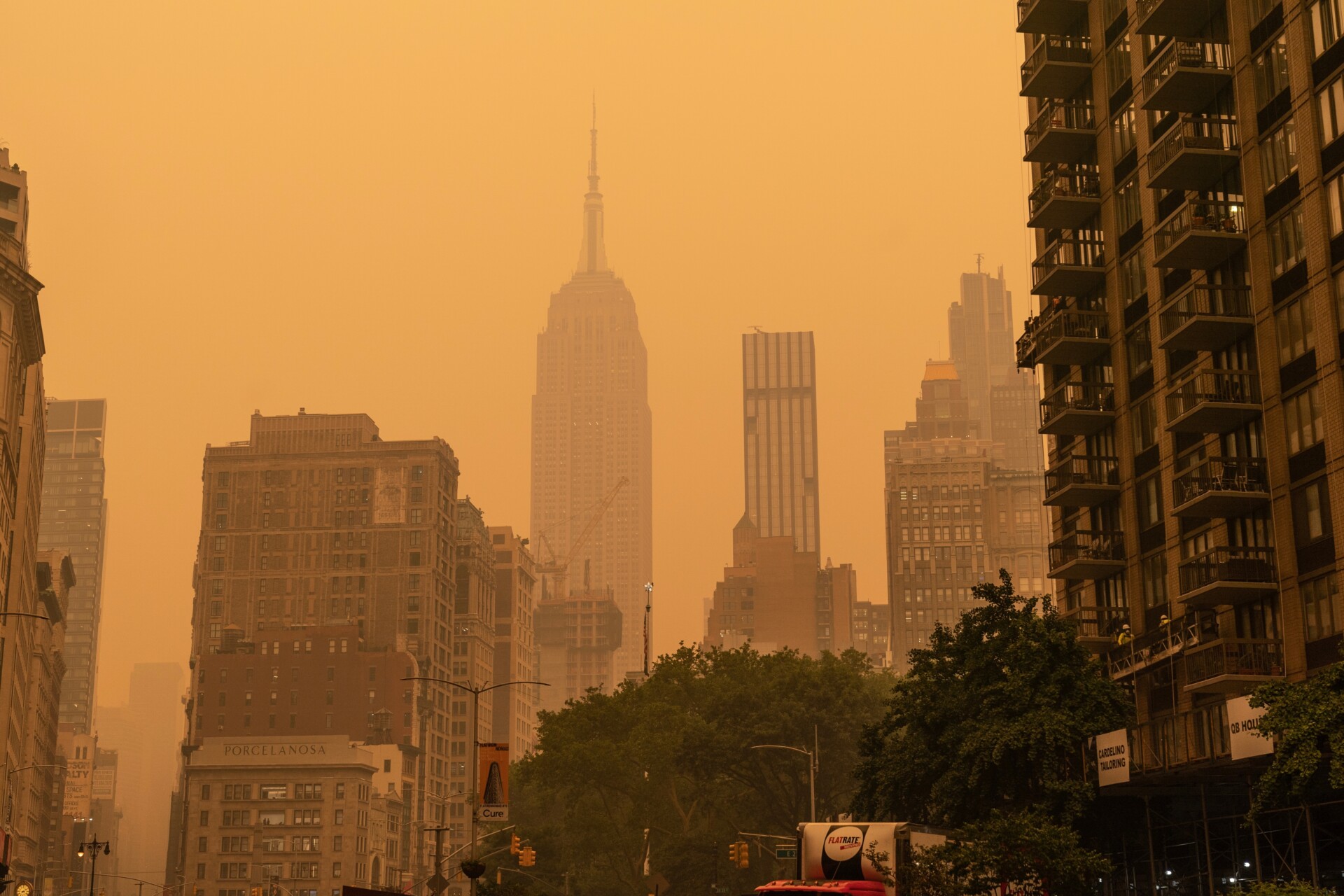
What are the costs of wildfire? CSU resource economics expert answers
q&a by Stacy Nick
published July 31, 2023

The impacts of wildfire can be devastating, but the widespread nature of those impacts and their full costs to society are still being researched.
“Wildfire impacts society through many channels: direct loss of property and life, smoke and health impacts, indirect impacts of a fire on tourism and home values, and impacts on agriculture, including vineyards and livestock,” said Jude Bayham, Colorado State University associate professor of Agricultural and Resource Economics. “Most fires are small and pose little threat to people and property. The big ones that burn near development create the largest impacts.”
Bayham’s research focuses on the economics of wildfire management, including estimating the impact of threatened homes, how resources are allocated across the country, understanding the factors that influence communities’ willingness to adopt wildfire mitigation, and the health and social consequences of wildfire smoke.
SOURCE spoke with Bayham to find out more about his research and how the increase in wildfires is costing society more than just financially.
How widespread is the economic impact due to the increased number of wildfires?
Wildfire impacts society through many channels: direct loss of property and life, smoke and health impacts, indirect impacts of a fire on tourism and home values, and impacts on agriculture (e.g., vineyards and livestock). Most fires are small and pose little threat to people and property. The big ones that burn near development create the largest impacts.
What are the biggest costs and maybe some of the most surprising costs?
The largest costs are probably due to the health impacts of smoke because it affects the most people, but it depends on the incident. Wildfires can also generate small increases in economic activity within affected regions as people pay for the construction industry. Perhaps, some of the more surprising costs are the social costs that arise from smoke-induced poor air quality. There are health effects but also impacts on crime and labor market outcomes.
How are past wildfires impacting resource management and estimating the impact of threatened homes, as well as how wildfire management resources are allocated across the country?
Past events certainly inform future strategies. Large events like 2018’s Camp Fire near Paradise, Calif. can alert the public to the risks of fire. Local and regional governments sometimes increase incentives or provide fuel treatment services after large incidents. In Colorado, the Forest Restoration and Wildfire Risk Mitigation Grant Program received permanent funding after the 2020 fire season (Cameron Peak, Grizzley and East Troublesome).
Protecting life and property are the top priorities of fire protection agencies, so threatened homes play an important role in driving resource allocation. In my 2020 paper in Land Econ, I document that fires with more threatened homes get more Type 1 crews (i.e., hotshots) and engines.
What are the factors that influence a community’s willingness to adopt wildfire mitigation practices?
There are many factors that may influence adoptions: wealth/resources, risk perception and cultural. A community must have the resources to undertake mitigation. This may be monetary wealth or time and know-how to do the work themselves. One interesting finding is that when community members talk about wildfire risk with each other, they are more likely to invest in mitigation.
As we saw during the pandemic when wildfires were clogging the skies with smoke, there are widespread impacts to people health-wise and socially from wildfires. What are the health and social consequences of wildfire smoke?
Health effects include respiratory and cardiovascular issues. We still don’t know the chemical composition of wildfire smoke because it depends on the fuels burning. Studies have associated smoke with increased hospital visits for asthma, respiratory issues and cardiovascular issues. Smoke can also affect birth outcomes when the mother has extended exposure. Some of the social consequences include increased crime rates and decreased labor productivity.
What issues in terms of wildfire mitigation and resource management are people not talking about right now, but should they be?
I think people understand that we need more mitigation to reduce the increasing risk of wildfire. However, the scale of the problem is not often discussed. The two methods for removing fuels from the landscape are mechanical removal/thinning and prescribed burning (often done in combination). These methods are expensive: mechanical treatment is labor intensive; prescribed burning generates smoke and can escape control. The cost to treat all of the built-up fuel loads is enormous. The question then becomes how much are we willing to spend to reduce wildfire risk and how do we pay for it. Do we need to raise taxes? Assess fees on rural homeowners? Cut spending on other needs?
Summers of Smoke
For decades, Colorado State University has been at the forefront of fire science, earning its reputation as one of the leading institutions studying wildfires. Explore other stories on wildfire research at CSU.